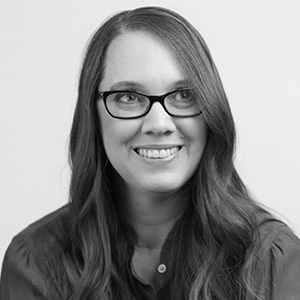In summer 2023, the world had high hopes for Meta’s newest social media platform, Threads. At a time when it looked like Elon Musk’s overnight rebrand from Twitter to X would contribute to the...
June 25, 2024
LEGAL MARKETING TRENDS 2020
Top Trends for Law Firm Marketing in 2020 and Beyond
Every year, we reach out to a select group of experts in legal marketing, business development, and tech to ask them for their thoughts on the most important trends in our industry. What’s changed, what is changing, and what comes next?
Predicting the future is a risky business, some might even call it hubristic. Many of the predictions for 2020 have failed to come true. A 1964 report by RAND Corporation predicted that we would have colonies on Mars, Venus, and the moons of Jupiter and that we would speak the same universal language. Even forward-thinking innovators can be mistaken about what comes next. Nikola Tesla predicted the abolition of coffee drinking within the century. Our love of coffee is still here, and most marketers will agree that it’s here to stay. Perhaps it’s best to give up on the prophet business altogether and to follow Yogi Berra’s advice to “Never make predictions, especially about the future.”
The predictions made by the experts gathered here are far more realistic and near term. Their insights are grounded in market realities and foundational practices. Even the enthusiasm for A.I. has been tempered. Developments in this space are still occurring, of course, but the pace seems less frenetic than some expected. It’s becoming more apparent that the advantages of the latest, greatest tech are dependent on a firm’s processes and people.
The truth is that the core principles of legal marketing have not changed: client service, personal connections, lawyer-lead thought leadership, relationship building, interpreting the available information and using those insights to drive action. As Roy Sexton writes in his article: “The new trends in legal marketing remain the things we should have all been doing in the first place.”
Many of the experts for this year’s Trends discuss the importance of strengthening fundamentals. Whether that’s Pamela Foster on the importance of B2C fundamentals in plaintiff marketing, Darryl Cross arguing for collecting less—but more focused—data, or Lloyd Pearson calling for substance over guff in directories submissions, these experts are saying that effective marketing comes down to knowing your audience and clearly communicating your message. Like Michael Jordon said: “Get the fundamentals down and the level of everything you do will rise.”
So, what about technology? The greatest benefit is improving our efficiency and the scale on which we can do the things we know are important, like getting client feedback (see Derek Jones’ article) or reaching new audiences (see Jessica Jaramillo’s article on podcasting). The good news is that you don’t necessarily need the most powerful software to connect with clients or make smart use of data, as Trish Lilley notes in her article.
That’s not to say that there aren’t sea changes underway. One of the most significant is the growing focus on mental wellbeing in legal; Bree Buchanan of Krill Strategies has that story. You’ll also find excellent articles on social media trends (Meghan Spradling), search advertising (Gordon Donnelly), case studies (Lynn Foley), and an article on leadership from the immediate Past President of the LMA, M. Ashraf Lakhani.
The best way to predict the future, and succeed in the present, is to understand why the fundamentals of the past worked. You’ll find plenty of ideas for how to build on that foundation in this year’s Trends.
May 2020 by a year of perfect vision for you and your firm.
The Articles
- Everything Old is New Again, Roy Sexton
- Succeeding with Legal Directories in 2020, Lloyd Pearson
- Marketing Benefits of Podcasting, Jessica Jaramillo
- Think Small to Grow BIG, Darryl Cross
- Data & Key Clients for Business Development, Trish Lilley
- Using Client Feedback in Legal Marketing, Derek Jones
- Social Media Trends in Legal, Meghan Spradling
- Building Client Trust Through Case Studies, Lynn Foley
- Take Leadership Personally, M. Ashraf Lakhani
- Measuring Results Will Become the New Focus for Plaintiff Firms, Pamela Foster
- Search Engine Advertising (PPC), Gordon Donnelly
- Lawyer Well-Being, Bree Buchanan
Everything Old is New Again
By Roy Sexton Director of Marketing, Clark Hill
“Don’t throw the past away
You might need it some rainy day
Dreams can come true again
When everything old is new again“
– lyrics from the song “Everything Old is New Again” by Carole Bayer Sager and Peter Allen (performed by the latter)
Perhaps it is a function of my age as I barrel toward the mid-century mark, but the new trends in legal marketing remain the things we should have all been doing in the first place. Prior to entering the legal space in 2011, I spent over a decade in a consumer-facing industry – health care – that, like legal, sells a human “product”: in healthcare’s case, the wit and wisdom and technical proficiency of doctors and other clinicians.
Healthcare is not necessarily known for its progressive approach to messaging, branding, advertising, or sales, and, yet, I find it gobsmacking that, in legal, we still don’t speak in some very basic marketing terms that I learned on day one in healthcare: for instance, presence, reach, awareness, leads.
We don’t measure these things the way other industries have (for decades), and, too often, our KPIs still feel reactionary in nature. Checkbook accounting if you will … or lagging indicators to borrow from our Six Sigma friends. For example, we tout proposals and pitches generated, won, lost, or simply flushed down a well, or we throw every resource but the kitchen sink at collecting outstanding revenue. Yet, the ideas of audience growth, developing a following, and true lead generation still appear to be a glorious mystery to much of our industry.
Heavens, I sound like a cranky neighbor throwing rocks from his front porch. I don’t mean to sound so cantankerous. Truth is, I’m as much of the problem here as anyone else.
So, with that said, what trends do we need to embrace in 2020? Well, this won’t sound very sexy as I’m not about to push for new tech or shiny new toys. We need to embrace storytelling. We need to understand the brand narrative. What does your firm believe in? What is its commitment to community? To clients? What is your unique value proposition? And, nope, that can’t read as “great service, smart people, at a fabulous price.” Everyone is saying some version of that.
Get specific. Be real. We have amazing tools at our fingertips in this digital landscape (ok, maybe I am getting a bit tech-y) to pull back the curtains on our respective organizations and let clients – existing and prospective – see the inner workings of our firms. And polish and panache won’t seal the deal. Authenticity, relatability, immediacy, outcomes will. Grow an audience, develop a following, and measure the heck out of every touch point those people have with your marketing content and with your practitioners.
Those organizations with our business in their sights have a very clear brand narrative: Deloitte. EY. KPMG. PwC. Everyone knows who they are and what they do. Long ago, with basically the same business model as legal, these companies were able to overcome the confederacy of voices that derail and dilute most firms’ market voices. They clearly articulate value, competencies, and brand, and they run themselves as businesses, not as wobbly democracies. They realize that a cohesive brand does not detract from but rather enhances the visibility of individual practitioners and, more importantly, their ability to win business.
The firms that can borrow from that playbook, march in lockstep, and land a coherent and, I repeat, accessible brand message will ride high through what is likely to be a tumultuous path for the legal industry.
I’ll be sitting on my front porch with a pail of stones.

Roy Sexton
Director of Marketing
Clark Hill
Cut the Fluff: Succeeding with Legal Directories in 2020
By Lloyd Pearson, Director, Pearson Communications
My 2020 prediction is that legal directories will become more intolerant of marketing guff. As a result, my aim is to cut out as many marketing clichés and well-worn phrases as possible. I urge you to do the same.
Chambers brought out an updated version of its submission template in late 2019. First introduced in the UK, the latest form will be rolled out in other regions in 2020. After looking at the template changes, my take is that Chambers is fed up of plowing through piles of information, and has taken steps to force firms to be more concise. With the biographies, include a web link to partners’ official firm profiles. Firms did not have websites in the 1990s, so directory submissions at the time performed a vital role in conveying information to the legal media that would otherwise be unknown. That isn’t the case anymore, with modern law firm websites rich sources of content. Summarize your partners’ practice, and then point them to the website. If the directory folks want more info, they know where to look.
Turning to the overview, Chambers has introduced a 500-word limit. I’m a fan of word limits. They impose discipline and force you to hone your message. With the old form, I made sure to keep overviews under a page, but many firms went way over, making it hard for researchers to grab the key points. Take the hint: sharpen up your message, and ditch the tired language.
Section B11 has been dropped. Thank god. If you recall, this was the section where firms would add in all manner of things – accolades from other publications, events, speeches. It was well intentioned – a place where firms could provide stuff that didn’t fit neatly elsewhere – but it ended up as a dumping ground for anything and everything. Researchers haven’t got time to wade through a list of every article your firm has authored.
Finally, the matter grids haven’t changed. That’s significant because they remain the most important part of the submission. Work highlights provide a valuable window into what a firm is doing. And, crucially, much of the matter content isn’t available elsewhere.
My message to legal marketers in 2020: ditch the “brochure speak”, and let the substance of your submissions do the talking.
Law Firms Tune in to the Marketing Benefits of Podcasting
By Jessica Jaramillo, Marketing Director, Ireland Stapleton Pryor & Pascoe
Would you like to build a reputation as a trusted resource with an audience of clients, potential clients, and referral sources that regularly subscribe to your thought leadership and expertise? Right, of course you do. Podcasting is a fast-growing trend that allows you to build this reputation.
Experts estimate that there were 86 million podcast listeners in the U.S. last year, and that number is expected grow to more that 132 million listeners by 2020. Podcasts are conversational, informative, and they provide opportunity for listeners to experience the content being created in a way that brings them into the conversation. There are hundreds of legal podcasts out there focusing on legal trends; changes in local, state, and federal laws; and of course, legal marketing.
For the creators, opportunity is abundant to inform and provide perspective on issues of the day. For the listener, there is little to no cost to tune into these episodic audible streams of ear candy. Now, the void of our daily commutes is filled with the cheery voices of our favorite podcasters welcoming us to be silent participants in conversations surrounding the news, business, education, and entertainment. Firms looking for new ways to highlight their value and elevate client experience will turn to podcasting as an inexpensive way to communicate thought leadership and provide audiences with a new way of consuming thought-provoking law firm-produced content.
As we continue to voraciously consume podcasts, you can be sure that law firms will leverage this trend to differentiate themselves and strengthen their market positions. Adding podcasting to the list of marketing tactics you deploy, is relatively easy, but as with all marketing initiatives strategy is key. Buy-in, consistent effort, and regularly scheduled episodes are crucial to success. Creating a plan for the production, including hosting, format (solo-casts, interviews, conversational), recording quality and distribution are essential. Be sure to set your intentions and measure engagement, and don’t forget to have a bit of fun too.
Not ready to launch your own podcast? Fair enough, but don’t discount the benefits of being a guest on someone’s podcast. Try it out! It’s an easy way to demonstrate thought leadership, expose your firm and its attorneys to a new audience, and create new business development opportunities.

Jessica Jaramillo
Marketing Director
Ireland Stapleton Pryor & Pascoe
Co-host of The Legal Slant podcast debuting in early 2020
Think Small to Grow BIG: Client-Centric, Competitive Advantage
By Darryl Cross, Practice Group Leader, Intapp
In numerous research studies on how buyers make choices and how performers focus on the most important tasks, it has been proven that unlimited options make it virtually impossible to consistently generate the best result. Call it information overload or analysis paralysis, the mere presence of overwhelming data and opportunities decreases competency. What any performer needs is the just the right amount of information at the right time to make the right decision–and no more.
However, in the legal industry, the opposite approach has been the conventional wisdom for decades. Influenced by a culture with an insatiable need for evidence and anticipating every twist and turn in a matter, lawyers and business professionals at law firms attempt to amass mountains of data to prepare for the unknown. Ironically, their quest for omniscience has the opposite effect. They know very little about everything.
What many firms are realizing is that knowing everything about a few important clients is more advantageous. Experts in marketing and finance identify the less than 10% of clients that are usually responsible for over 90% of the profits. By determining key clients, resources are devoted to a strictly defined set of opportunities. With a smaller world of clients defined, modern firms use technology to make better, faster decisions that can be replicated at scale. They understand that internal data, a confidential resource, is made more powerful when combined with external content. Adding relationship intelligence makes it actionable and identifies ways to foster collaboration between lawyers that are advantageous to the client.
Once a firm has used its top clients to define its proven success using data, technology, and collaboration, the approach serves as the blueprint to target new industries, prospects, and markets. Instead of looking externally for endless opportunities, key client programs allow firms to focus on their strengths as defined by the preferences of those that made the firm successful. The next step is to replicate the approach to other clients, prospects, and referral sources who look strikingly similar to what made you successful in the first place.
When you combine internal data, external content, and collaborative relationships about your top clients, it creates a unique competitive advantage. Law firms that exhibit focus, discipline, and intensity based on the information about their key clients define their own differentiated plan for growth. Precedent becomes the path forward.

Darryl Cross
Practice Group Leader, Professional Services Firm Leaders and Partners | Certified Team Performance Coach (CTPC)
Intapp – The Intelligent Platform for Professional Services
Focus on Your Data and Key Clients for Effective Business Development
By Trish Lilley, Chief Marketing and Business Development Officer, STROOCK
Data-Driven Dynamos
Over the past several years, sophisticated marketers have persuaded their firms to base more of their strategies and client development initiatives on data – which is remarkably more effective than clairvoyance or hunches! – and that trend will continue into 2020.
The number of firms exploring, analyzing and leveraging their data to make strategic decisions about marketing and BD spend and activity will vastly expand as this is an approach that any size firm can adopt without heavy investment in technology or staffing. Certainly, various databases and software make analytics easier, but a firm’s financials, client information and practice data are always accessible to marketing professionals regardless of firm size.
With everything from social media campaigns to meaningful event management, data will be relied upon more and more to ensure that funds are aligned with strategic priorities in meaningful and fruitful ways.
It’s the Clients, Dummy
Account-based marketing, key account management or client teams will continue to expand rapidly among those firms truly focused on success. Nomenclature aside, focusing on your key clients – keeping them content, offering them unique products and entrée, training their teams and integrating with them through substantive and social experiences – will be the bread-and-butter strategy to which smart firms turn.
From a generational standpoint, we hear from more and more clients that they appreciate joint community service and diversity-focused activities. The days of bourbon and baseball have given way to homeless outreach and diversity hackathons. Clients want to share data security tabletop exercises with us, have their junior lawyers join ours in depo trainings and partner on any number of “ancillary” issues and projects to enrich the relationship and expand the value we offer to them.

Trish Lilley
Chief Marketing and Business Development Officer
STROOCK
Using Client Feedback in Legal Marketing
By Derek Jones, CEO, Acuigen
One of the bigger changes within corporate law firms in the years ahead will be how to adapt to gathering, consuming and utilizing more insight gained from client feedback. Whilst there is little new in the concept of interviewing clients, after-all it’s been going on for many years, what is changing fast within law firms is an ability to systematically gather regular feedback. It can be gathered from different clients on many occasions (e.g. matter closure, relationship assessment, secondment feedback, post-pitch) then processed, and made use of on a significant scale, in almost real-time. This facilitates client feedback being regularly available to decision makers when they need it.
In many ways, the introduction and usage of this type of regular client feedback within firms is similar to the adoption of email in the 90s – there becomes a time when the new service becomes ubiquitous and users can’t imagine how they managed without it.
With the ability to handle and usefully consume feedback, the biggest changes to be observed in forthcoming years will be:
- A switch from ad-hoc single method interviews (e.g. a bi-annual web survey or occasional in-person interview) to systematically gathering feedback using several interview methods (e.g. phone interviews, in-person interviews, web surveys etc.) appropriate to an interview opportunity.
- Passing the content gathered into a single feedback repository with tools to manage this content and make the content actionable, using analytics and data warehousing.
- Linking matter databases, financial and other data sources so that the content becomes an amazingly powerful source of knowledge and opinion, preparing for better use of AI.
As the appropriately redacted knowledge becomes available, it feeds 5 key audiences of a firm with content:
- The matter attorney and relationship partner (for matter and relationship management).
- Senior business professional within firms (e.g. to support marketing, LPM refinements, competitive knowledge, pitch support etc.).
- Specialist teams (e.g. risk and compliance).
- Clients and markets (feedback gathered is a source of original content and market knowledge that can be recirculated into training content, case studies, and marketing materials).
- Leadership teams who have informed decisions to make, and influence reward and incentivizing decisions.
We can expect to see more firms adopting a systematic approach to gathering feedback and developing firm-wide best practice to utilize its content. The content will increasingly be used as a management tool and we will see a subtle shift in the levers of power within firms as more client knowledge is utilized, enabling wider teamwork and more collaboration as key client accounts are institutionalized and supported with key account management programs.
The legal press regularly forecast the top 10 firms of the profession in 5 or 10 years’ time. It’s our opinion that only those firms who have effective client feedback systems in place within the next 5 years will be the firms of the future – the others will probably be absorbed or fade.
The larger the firm, the more challenging and time-consuming it is to implement a successful and sustainable client feedback initiative, but legal professionals who acquire the skills necessary to make client feedback happen and use it, will be the future leaders of these leading firms.
Attorney Engagement, Algorithms, and Advertising: Social Media Trends in Legal
By Meghan Spradling, Marketing & Communications Manager, Miller Nash Graham & Dunn LLP
Trends in social media are a funny thing. In a landscape where content creation, technology, and platforms often change, it’s somewhat challenging to distinguish what could constitute a long-term trend…or one that will even be relevant at the end of this year. In the past few years alone, we’ve seen attorney/law firm marketing expand beyond LinkedIn to incorporate Facebook and Twitter, algorithms change, and firms accept that this trend (aka social media) is, well, here to stay.
So in 2020, what can we expect from legal social media? First, we should start to see more attorneys utilizing the platforms for business development and marketing, extending beyond sharing presentations and publications to engagement with clients and the communities in which they serve.
There is no denying that an individual’s reach is far greater than a law firm. But we also work in an industry where risks and the unknown drive participation, or the lack thereof, within our firms. For early adapters of social media in the legal industry, long-term successes are now visible. And as law firm marketers, we should capitalize on these successes and thrust our social media savvy attorneys into the spotlight. With the addition of social media-specific roles in many law firms, there is greater opportunity for internal training…and it’s definitely worth the investment.
Next, algorithm changes will play a great role in social media strategy and implementation. Among all platforms, we’re seeing a shift from brand/influencer post-placement to news feeds and timelines filled with those who users interact with the most. We may start to see our company page analytics decrease, so it’s more important than ever to stress that our people should be building personal relationships within the platforms. It’s now about comments and shares versus “likes”. And, to tie this together with the “trend” above, success will stem from effective training within our firms–teaching our attorneys and professional staff the importance of not only “liking” the content, but sharing the content with a brief personal statement.
But what if our attorneys and staff don’t/can’t make the time to engage? Enter technology. To round out the last decade, we saw the rise of employee advocacy platforms. With one click, employees are able to share relevant content to their individual pages. Sure, we may lose a bit of a personal element (though most platforms I’ve seen offer the option to add a brief statement), but at the least, the content is being shared to one’s personal page, and again, driving engagement and visibility to both our people and our firms.
Lastly, we will likely see paid social media advertisements increase among attorneys and law firms this year. While you will need to pay to play, social media advertisements will give firms the opportunity to stay visible in news feeds. Similar to many other areas of social media, advertisements have come a long way in terms of targeting, messaging, and cost. The good news? These are all areas that you will have control over when determining where and when to post your ads. From recognizing practice areas to publicizing a campaign, there are several options to consider when determining ad content and your targeted audience. Remember to reference your state’s Rules of Professional Conduct when it comes to advertising your attorneys and firms.
I expect 2020 to be another big year for law firm social media marketing and look forward to the continued growth and opportunity for legal marketers in this area.

Meghan Spradling
Marketing & Communications Manager
Miller Nash Graham & Dunn LLP
Building Client Trust Through Case Studies
By Lynn Foley, CEO, fSquared Marketing
Case studies are one of the most effective forms of marketing communication, they also happen to be my favorite. They’re where the rubber meets the road.
I’m not alone in this view; a survey of 600 B2B marketers by the B2B Technology Marketing Group found that case studies were viewed as the most effective tactic and format. While case studies are widely used in B2B tech marketing, they are far less common in legal. In 2020 and beyond, we’ll see more law firms investing in high-quality case studies and making this form of storytelling a core part of their marketing program.
Too many law firms expend all their efforts telling prospective clients why they are great. Case studies show clients why a firm is the right choice. Don’t get me wrong, a firm should be able to articulate its value, but—even if David Ogilvy were to write your firm’s “About Us” pages—there is a limit to how much marketing copy your audience can be expected to absorb.
Besides, it’s boorish to talk too much about oneself. Instead, give your audience a story with a problem, tension, and admirable cast of characters and you’ll enjoy their full attention. Case studies work because they are stories first and marketing pieces second. They offer plot, information, and, ideally, entertainment in exchange for the audiences’ time.
They also provide social validation. The Internet has changed how we shop, socialize, and conduct business; it has forever altered how we make decisions. Call it the Amazon effect, but checking reviews, ratings, and testimonials has become an ingrained part of how we make purchasing decisions. Think buying legal services is different? It is, the stakes are higher—this only increases the importance of social validation in the decision-making process.
We often hear law firms say that they only receive business from referrals. This makes me wonder, is this because they have a strong referral network or is it because the only source of social validation available to prospective clients is their referral network? Would these firms start to receive business from other sources, including their website, if social validation was more consistently made available? All signs point to yes.
Prospective clients want proof that your firm has done this before and delivered exceptional results. Generalities won’t cut it. Facts tell, but it’s stories that sell.
My prediction is that we will see more case studies told from the client’s perspective. This works especially well for project-based work, as you can show the full arc of the story, through to a completed development, invention, product launch, whatever the result may be. I think we’ll see more case studies with clients in the starring role. These will be like tiny documentaries and, while the lawyers will be the ones who save the day, the protagonist will be the client. The focus will be on the client, the challenges they faced, and how—through a partnership with their law firm—they succeeded.
We’ll also see more law firms investing in video production. Video can be costly and some firms will have sticker-shock, mostly because they view case studies as just another thing to put on their website (and it’s likely that their website has never delivered on its potential). But there will be other firms who see the value in crafting a core marketing resource: content that can be repurposed for blog posts, newsletters, advertisements, podcasts, pitches, and proposals.
If you want clients to choose your firm, they need to trust you. Trust begins with a good story.
Take Leadership Personally
By M. Ashraf Lakhani, Director of Business Development and Marketing, Porter Hedges LLP
Leadership in legal marketing takes many different forms. For me, it was my volunteer leadership service over the last decade for the Legal Marketing Association (LMA) at the local, regional, and international levels. Most recently, I served as LMA President in 2018.
What I learned leading our largest trade association of more than 4000 members is an appreciation for the diversity of thought, experience, and backgrounds of the individuals that comprise our industry. I have become a better professional and a better person because of the relationships that my legal marketing leadership offered.
LMA was my path and I encourage you to find yours in our industry. No matter what your role at your firm or company, you have opportunities to lead every day. Leadership in legal marketing does not come from a title or position. What is genuinely great about what we do as a collective industry is that we can find small moments to lead nearly every day. Whether it is the opportunity to selflessly mentor a colleague, selfishly support a superior, or contribute to a team goal, do not shy away from the small moments that add up and lead to the big ones. Just be prepared when the big one comes.
Despite what Hank Williams Jr. might say, legal marketing is not a family tradition. Unlike the attorneys that we work with, we are not legal marketers because our parents were legal marketers and their parents before them. We chose this profession so seize an opportunity to define your personal career path through individual leadership.

M. Ashraf Lakhani
Director of Business Development and Marketing
Porter Hedges LLP
Measuring Results Will Become the New Focus for Plaintiff Firms
By Pamela Foster, Principal, Pamela Powered Inc.
The Plaintiff legal industry has become increasingly competitive in recent years and the trend will continue in 2020. A crowded marketplace of attorneys competes for consumers who need legal advice. Now, more than ever before Plaintiff marketers need to focus on the fundamentals of B2C marketing; identify, understand and meet the needs of the consumers and how they shop.
Many seasoned attorneys still rely on referral relationships for new business, and while referrals are still an important source, most potential clients are now buying legal services in the same way they shop for everything else: online. The more successful firms have already diverted marketing dollars from meals and entertainment to digital marketing and investing heavily in their ability to engage and influence potential clients online.
The investment in online marketing will continue to dominate Plaintiff Marketing. You will generate more leads by differentiating your firm, creating cost-effective targeting strategies, and improving Google Reviews.
Sadly that is not enough; partners measure ROI on file openings and file value. If your firm does not track leads as they pass through the sales funnel, it is hard to tell exactly where things may be going astray. You may have done a great job of generating leads, but if your firm’s intake process is flawed, your hard work could have been in vain. Intake may not seem to be your business, but more marketers are inserting themselves into some part of the intake process so they can analyze results and offer solutions to help increase your results. Call it an exercise in self-preservation.
The noted Management Consultant Peter Drucker made a valuable point: “You can’t improve it if you can’t measure it”, and in a highly competitive landscape your firm cannot afford to lose cases to competitors.

Pamela Foster
Principal
Pamela Powered Inc.
LMA Co-Chair, Plaintiff Firms SIG
Attracting High-Intent Clicks is Key to Search Engine Advertising (PPC) for Law Firms
By Gordon Donnelly, SEO & Content Specialist, Wordstream
It’s well-documented. The legal industry is perennially one of the most competitive for pay-per-click (PPC) advertising; this trend will continue for 2020. The average cost per click is $54.86, but you can easily spend up to $1000 or more on a keyword. It’s an industry where you just can’t afford low-intent clicks. Luckily, there are a number of ways to make sure you’re generating qualified clicks that actually result in leads.
My first piece of PPC advice for 2020: Be wary of call-only campaigns. If you’re a smaller firm with a limited budget, and your website reflects that, then sure, do all you can to entice calls right from the Search Engine Results Pages (SERP). But if you’re a bigger corporate firm, odds are, you’re going to lose some money on people who click your ad then decide not to call. Use a call extension, sure. Otherwise, let your landing pages do the heavy lifting.
Second piece of advice. This is for the non-paid side. Optimize your core pages for high-volume organic keywords with local intent. So many people think that Google My Business is the key to ranking high in the local listings. And it is a big factor. But then they fail to optimize their core pages (homepage, services pages) for the keywords with volume that reflect local intent. Google My Business is just one part of the equation. Off-page Search Engine Optimization (SEO), or link generation, is another (and if you’re struggling here, you absolutely need a content plan). But without the third piece of the puzzle, the ability to optimize both your on-page content and metadata with the right keywords, you’re not going to get in that coveted top three of the local listings.

Gordon Donnelly
SEO & Content Specialist
Wordstream
Focusing on Lawyer Well-Being Is a Win
By Bree Buchanan, Senior Advisor, Krill Strategies
This year, the legal industry will see more of the growing trend towards a greater focus on lawyer well-being. At Krill Strategies, we regularly hear from managing partners and the cadre of professionals that keep offices running smoothly, that promotion of well-being is a win-win for the firm, as well as the lawyers and clients. To recruit and retain the top talent in this competitive market, lawyers want to know that their firm respects and cares for them as individuals and is willing to invest in their well-being. Healthy lawyers also make for healthy profits, satisfied clients, appeased malpractice carriers and just a better all-around place to work.
The most significant indicator of this trend lies with the ABA Well-Being Pledge which was launched in 2018 and continues to gain support. Now with 164 signatories and counting, the Pledge provides a seven-point framework for legal employers to adopt, one which encourages the development of new or more robust well-being programs, as well as policies and practices that will support their lawyers in efforts to maintain health and balance. Point seven calls upon firms to highlight their adoption of the well-being framework, an action item that many of the signatories have begun to take on. With a national summit being in held in Washington, D.C. during the month of March, it looks like this trend is just beginning to take off!

Bree Buchanan
Senior Advisor
Krill Strategies
Marketing Legal Services in 2020
2020 will be a year that rewards sound marketing fundamentals as well as those who can think innovatively. While tech offers new tools, relationship building, professional development and business development strategy are still essential for achieving lasting success.
Thanks to all of the experts who shared their insights on legal marketing trends in 2020. From all of us here at fSquared Marketing, we wish you all the best in 2020 and beyond!
Looking to stay ahead of the curve? Get legal marketing insights straight to your inbox!
Sign Up To Our Newsletter



